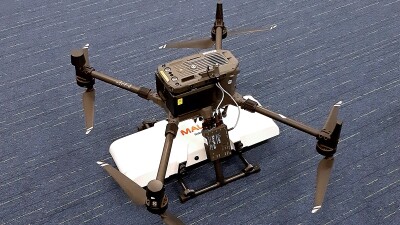Certainty 3D’s TopoDOT is now pay as you go; IMAGINiT introduces floating network license structure for Scan to BIM
As 3D laser scanning – mobile, airborne, terrestrial – becomes mainstream for surveying and engineering firms, there is increasing desire to utilize scan data throughout the entire organization, interrogating point cloud data at every phase of a transportation project. Similarly, AEC firms with concurrently running construction projects, each with scan-to-BIM programs, may require point cloud processing for some project phases but typically not for the entire life of the project. In both instances, demand for point cloud processing software licenses can be uneven.
However, there is often a hefty cost to investing in software licenses to allow everyone in the organization to process or otherwise use the data simultaneously. Do you license up to accommodate peak demand (expensive!) or do you delay projects at times because there are only so many licenses to go around (also potentially expensive)?
Ted Knaak, president of Certainty 3D, thinks he’s got the solution for clearing that license hurdle. His new pricing plan for TopoDOT, software that allows users to extract vector deliverables from laser scan data, is essentially pay-as-you-go. Rather than a seat-license model, Knaak has chosen to go with a model whereby organizations can load the software onto as many computers as they’d like, and simply pay for the number of days the software is put into use.
Similarly, with the release of Scan to BIM 2012.1, software that allows for the use of point clouds in Revit, IMAGINiT has introduced a “floating network licensing” structure, whereby the license can be traded around the organization, rather than being locked to one particular machine.
“By purchasing user-days instead of installations,” Knaak explained, “our licensing agreement places no cost on additional installations of TopoDOT. Of course, we have to make money, but we only charge to purchase additional user-days after the user exceeds his balance – and then only a one-time annual ‘true-up’ (I believe that’s the software industry expression) payment at the end of the year.”
Here’s a full explanation of the exact details of thelicensing plan. Note that TopoDOT only works in coordination with Bentley’s Microstation product.
“Say they buy a single copy,” said Beau Turner, director of business development for IMAGINiT Technologies, “they can use it for five or ten different people, across five different offices. When someone is using it, it’s locked, but when they’re not, it’s released and put back into the pool.”
The result in both cases is that more people in the organization have access to utilizing the point clouds that have been captured, and both Certainty3D and IMAGINiT agree that’s a good thing.
“In the big picture market,” Knaak said, “this agreement facilitates point cloud and image data to flow to levels where it would never have been used before. No engineer was going to install an $18k license on his computer to use point clouds, say, three times a month or so. But now that engineer only pays for what he uses with no cost tied to installation. So we’re breaking down the barriers to adoption of this data across the entire spectrum of operations.”
“Any opportunity that we get,” Turner agreed, “to help promote the use of point clouds, in the end that drives the market forward.”
Turner noted that the every-day modeler remains Scan to BIM’s power user, and that person is intimately involved with the scan projects. He or she is either doing the actual scanning, or is on site when the scanning is being done “so it’s a quicker pace for them to be able to use the data.” However, Turner said IMAGINiT is now seeing the point clouds being used as a tool by the QA/QC people.
“Before you can get to fabrication, people are hesitant to trust data,” Turner said. “Point clouds have sort of changed that. It is reality. No one can manipulate those points. We can trust it and now we just need to validate it against the model.”
Turner thinks this will continue to drive point cloud use, in what’s already a rapidly growing market: “We’re growing so quickly in point cloud capture and use … we’ve seen more people try it in the last 12 months than in the five years before that.”
Knaak sees the same thing happening. “This wasn’t making money for people before,” he said by way of explanation. “The scanning was too slow, the processing was too hard. But now they’re doing million dollar surveys for $300k. This is going to take off now.”





